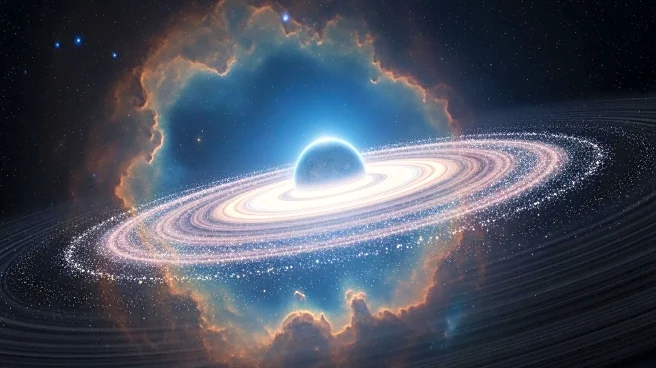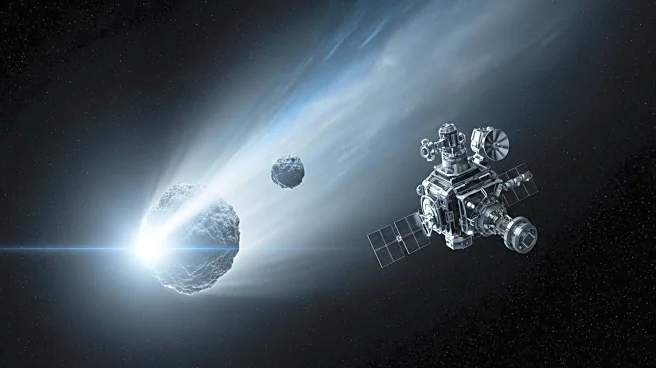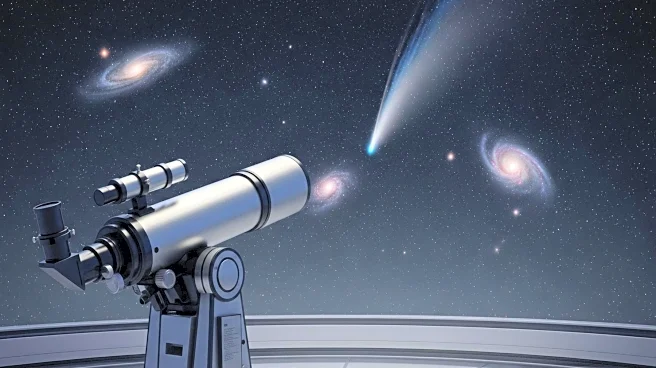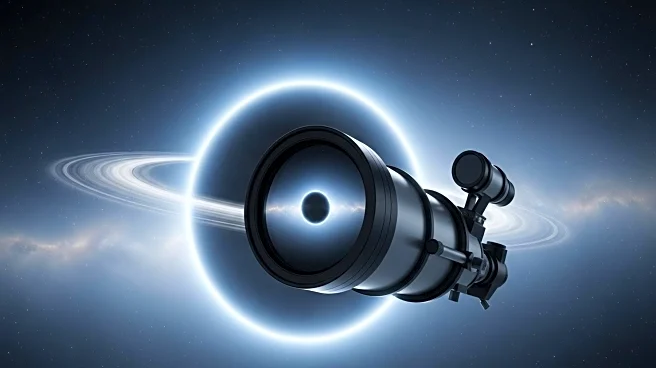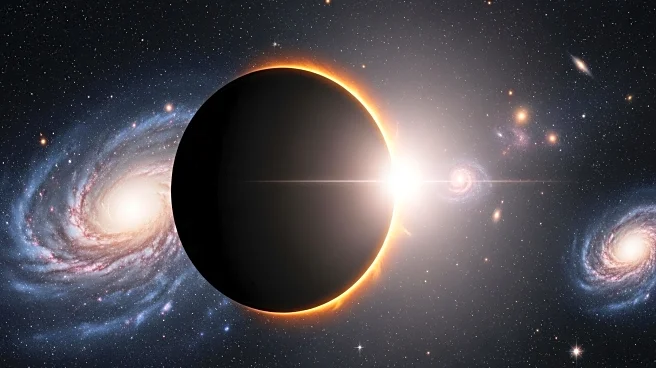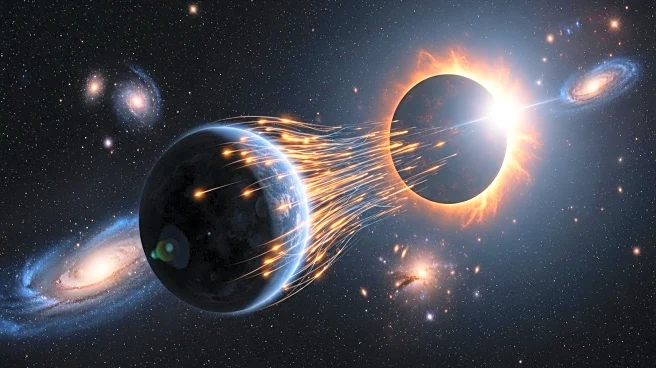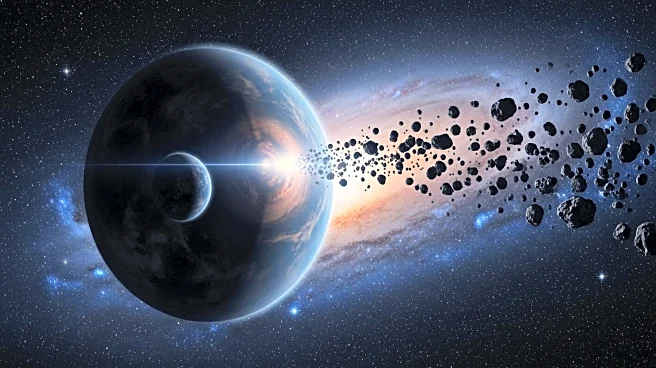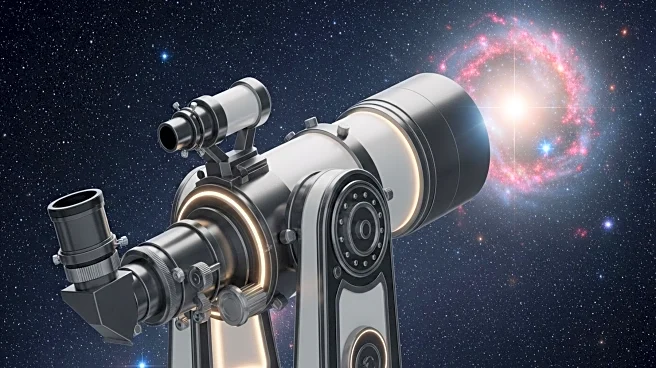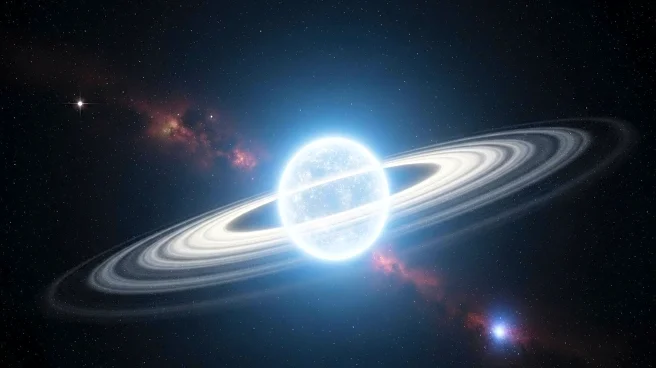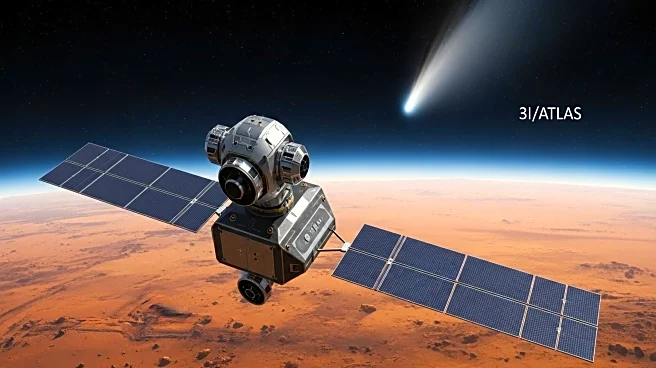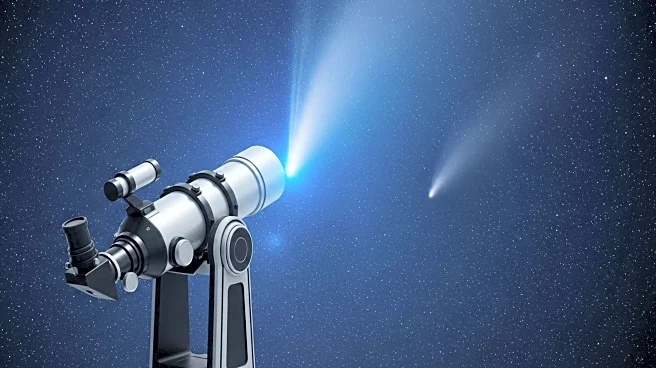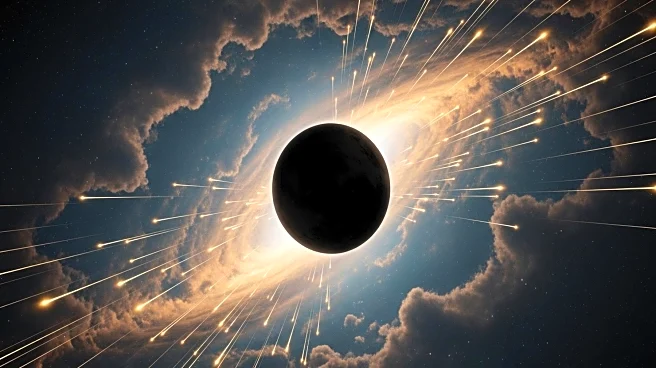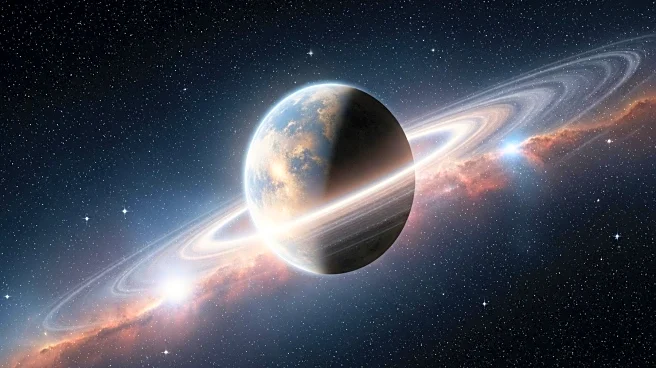What is the story about?
What's Happening?
Astronomers have captured video evidence of a newborn planet sculpting its dust disk around the young star HD 135344B, located 440 light-years away in the constellation Scorpius. Using the European Southern Observatory's Very Large Telescope (VLT), researchers identified a compact object where one of the spirals in the dust disk begins, likely a planet still gathering mass. The suspected planet sits about as far from HD 135344B as Neptune does from the Sun and is believed to hold twice the mass of Jupiter. This discovery provides a rare snapshot of planet formation in real-time, offering insights into the processes that shape planetary systems.
Why It's Important?
This observation marks a significant milestone in the study of planet formation, providing direct evidence of a protoplanet sculpting its surrounding disk. Understanding how planets form and evolve is crucial for comprehending the dynamics of planetary systems and their potential for hosting life. The ability to observe planet formation in real-time allows astronomers to test theories and models that have previously relied on computer simulations, enhancing our knowledge of the universe's structure and evolution.
What's Next?
Future observations and technological advancements, such as the next-generation Extremely Large Telescope (ELT), will enable astronomers to capture even finer details of planet formation. Researchers will continue to monitor the signals from HD 135344B to confirm the nature of the bright knots and understand the processes involved in planet formation. These efforts will contribute to a deeper understanding of the mechanisms that govern the birth and development of planetary systems.
Beyond the Headlines
The study highlights the importance of advanced observational techniques in uncovering the mysteries of the universe. By pairing sharper instruments with long-term monitoring, researchers are starting to catch planets in their messy, luminous infancy, providing valuable insights into the early stages of planetary development. This research underscores the dynamic and complex nature of cosmic evolution, offering a glimpse into the processes that shape the universe.
AI Generated Content
Do you find this article useful?
